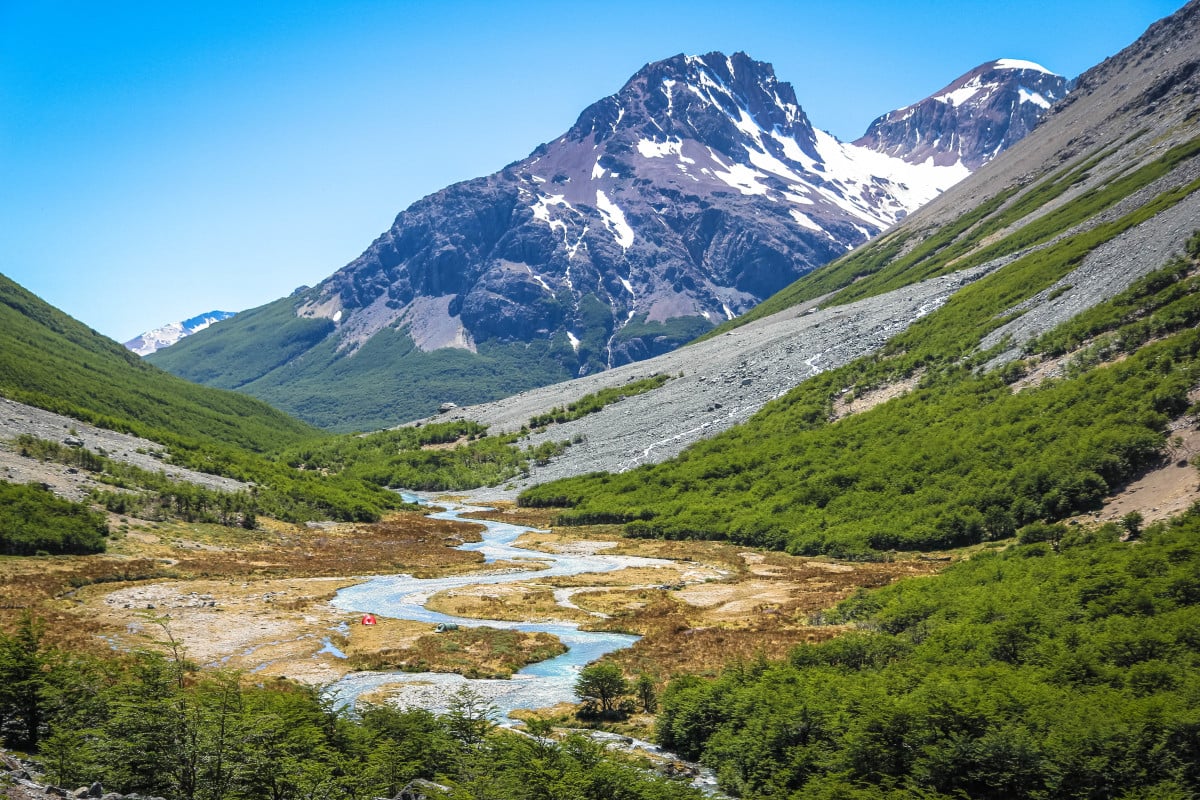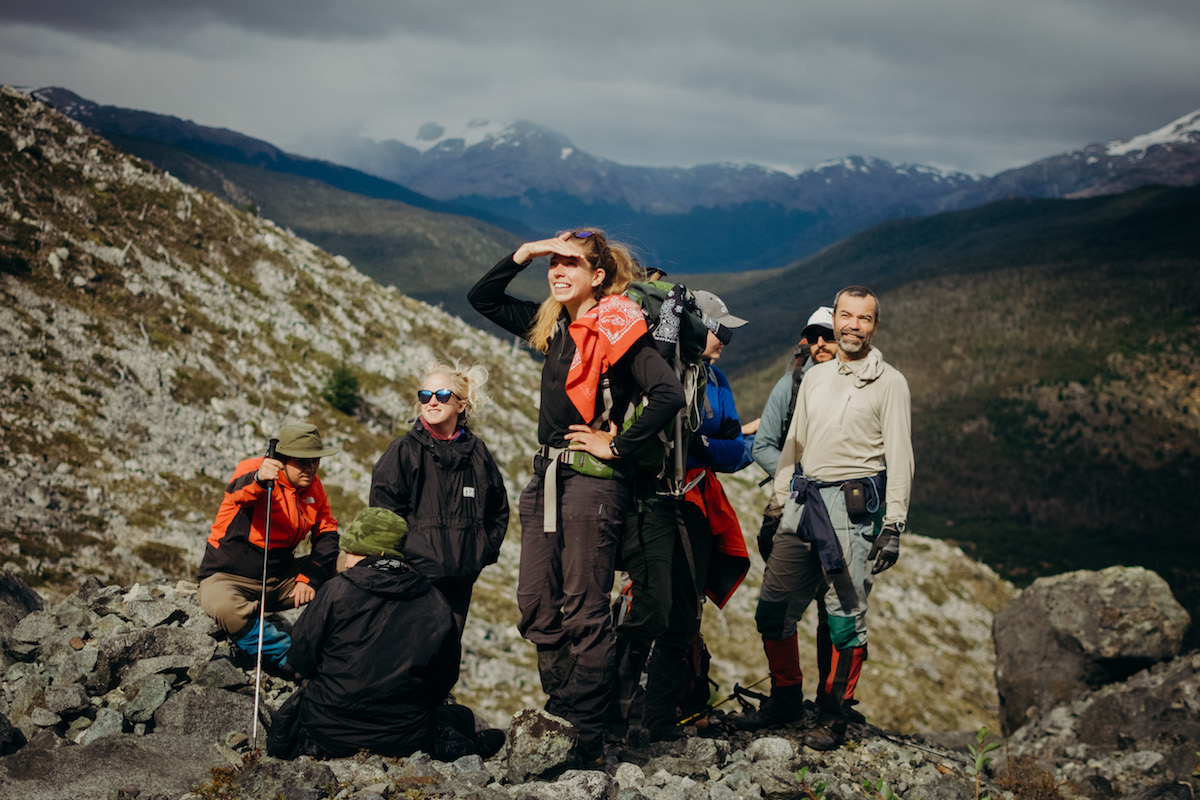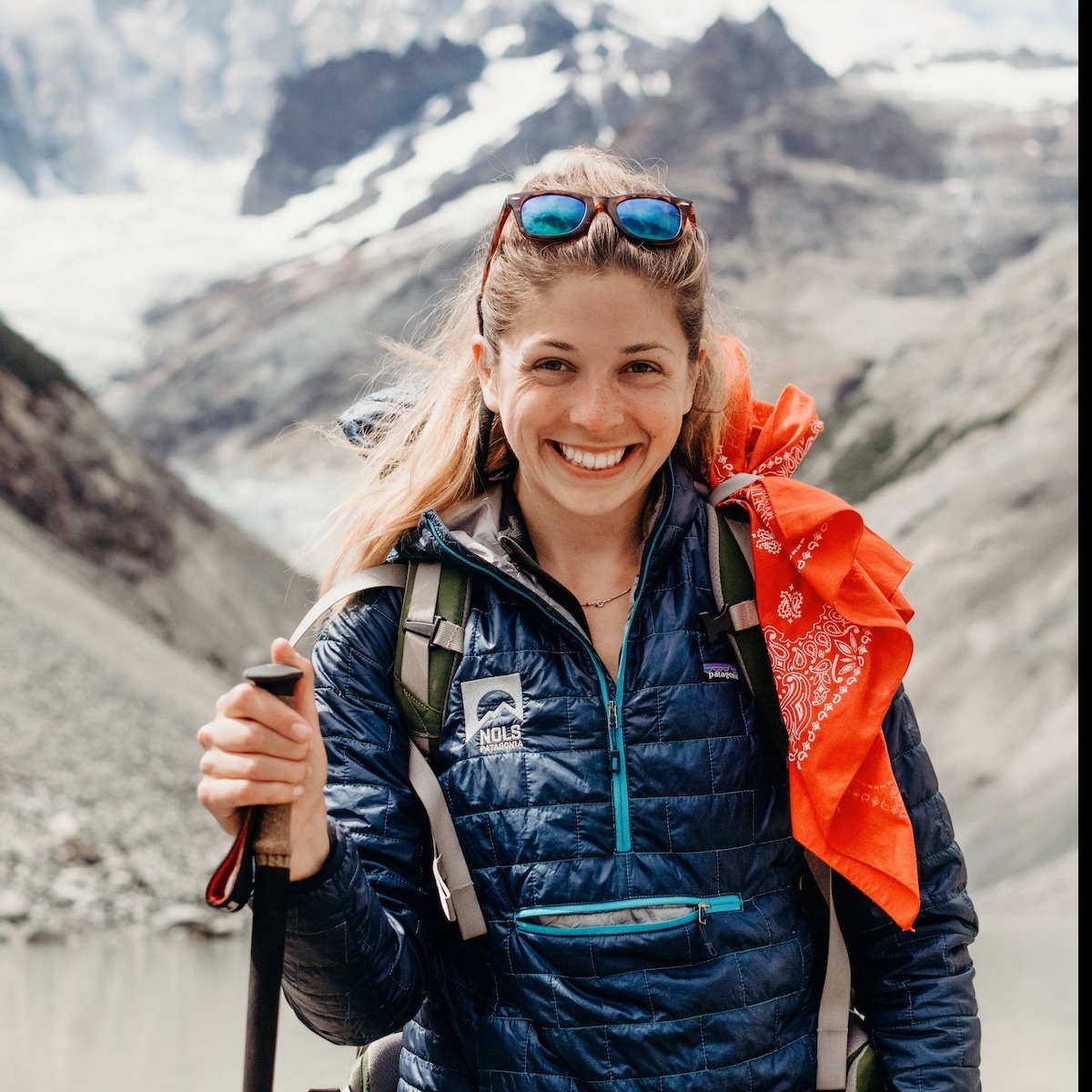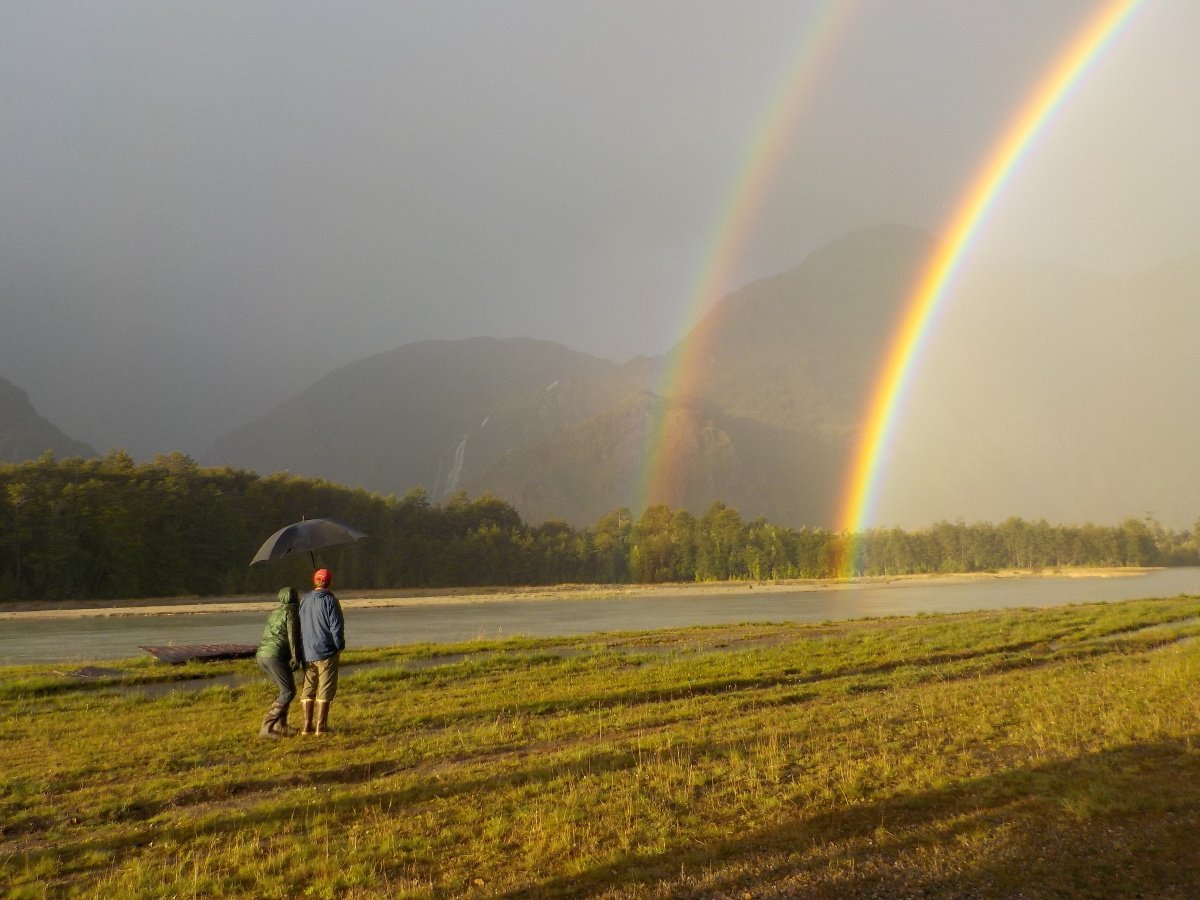
I was sitting in my doctor’s office, awkwardly fussing with my johnny gown and glancing down at the NOLS health form in my hands. My doctor comes in and after some formal chitchat I ask her to complete the health clearance for this month long hiking and cultural expedition in Patagonia.
“A month of hiking? Sleeping in tents? In South America? Are you being punished?” she half joked. “No, I’m paying to do this” I joked back. “Well good for you, I don’t even like going out in my backyard.” She signed the form and I left the office, mentally checking off the final item on my expedition to-do list.
On a scale of "my doctor" to conservationist Doug Tompkins, I would've had to place myself somewhere in the first 1/3. My experience with the great outdoors was about what you'd expect for a gal who grew up in the suburbs of Massachusetts: a New England mix of day hikes and “glamping” at campgrounds. The last time I assembled a tent may have been making a fort with my sister in my own living room circa 2005.
So why then, you might ask, would I elect to leave behind all modern conveniences and remove myself completely from society for an entire month on this Patagonia Cultural Expedition?
The myriad of friends and relatives who asked about it were confused about why someone who had just received her Masters in Public Health would do a NOLS course—and, quite frankly, so was I.
Was this a quarter life crisis? So millennial of me. My internal critical voice crept up often. You should be looking for a job. You’re going to get bitten by a brown recluse spider and die. People will think you’re flighty and reckless deciding to run off to South America and live in the woods. But a deeper and—let’s be real—nicer voice said Go.
If you open my travel journal, the first few entries start with the phrase “I want to go home.” My heart was heavy on the plane. I missed my family, and felt overwhelmingly lonely and intimidated by what lay ahead. Gung ho adventure girl wanted to lie back down in her bed and call it a day.
Trying to pull myself out of it, I opened a letter tucked into my bag labeled “For the journey there…love, Ryan.” This quote appeared at the bottom of the letter:
“There is nothing like looking, if you want to find something. You certainly find something, if you look, but it is not always quite the something you were after”. J.R.R. Tolkien
I knew I liked him. (Ryan, that is, though J.R.R. is fine, too)
Twenty-four travel hours, three planes, and one large headache later I stepped foot into Patagonia, ready to see what I could find.
What I found was hyped excitement upon meeting the eight other students and two instructors with whom I’d spend every waking moment of the next month of my life. Whether it was the fact that we were embarking on a journey to push our limits and learn about a new culture, or the fact that we met each other on a full blood moon, we bonded like glue to paper and I felt the layers of my desire to blend in fall off.
Revealing this version of myself felt like I was greeting an old friend whom I’d lost touch with. Hi there, I remember you, I liked you! And that feeling only grew as we commenced the expedition and found ourselves stepping up to the daily challenges of living life in the mountains.
.jpg)
The first few days were HARD. Foolishly, I thought the physicality would be the easiest part. 80-150 miles on foot over a whole month. HA. No problem for Jen. I work out. I hike. I had failed to consider that I do not typically exercise with a 60-pound backpack, tearing through bushes and mucking through mud. Pulling my water-soaked boots out of sinkholes of mud worked muscles I did not know existed in the human anatomy.
I expected moments of mental difficulty, but again, I underestimated. Especially the horseflies. They swoop to your ear with the speed of a Navy Blue Angel and parkour off your ear lobe to your eyebrow and—just before you can smack them away—they spring off your brow to the fraction of your back that you can’t reach and sink their teeth through your highly-reviewed Patagonia capilene mid layer.
I watched in amazement as my instructors brushed them away, as if saying “No, thank you” to a waiter offering coffee and dessert. So, instead of letting my inner four year old take hold and collapsing to the ground in a pile of tears, I learned to brush them away too and do all that I could do—keep hiking.
For 28 nights we slept in tents, which is approximately 26 nights more than I had ever spent in fabric held up by poles. A few centimeters of fabric were the only thing between me and nine straight days of rain, howling winds, the squeaky branch that sounded an awful lot like a clown horn, and the critters that roamed the night. A body once accustomed to sprawling out on a queen size bed was now restricted to 20 inches of Thermarest and two snoozing tentmates on either side.
So, you can imagine it came as a surprise when, about halfway through the course, I found myself dreading the thought of leaving my tent. I remember unzipping the mesh and vestibule zipper, and gazing out at the morning sun reflecting off a glacier, watching its runoff form the most magnificent waterfall. Instead of waking up and immediately reaching for my phone, I was staying in my sleeping bag a few moments longer to listen to the rush of the river or chirp of the birds.
Without these distractions, I noticed things. I noticed the way the evening sun illuminated the tall brown grass swaying in the wind a rich color of gold. The way the huet huet bird would curiously watch our group cooking dinner. I watched the clouds as the wind morphed them from wolves to llamas to dragons. I noticed the single bright yellow flower growing amongst the rocks in the high alpine.
I resisted the temptation to just “make it to the X” and “get through this hill” and enjoyed the journey—the pleasant and the unpleasant, knowing that neither would last forever.

After a particularly challenging day of hiking early in the course, we reached the campo of the late Don Heraldo Rial. We were invited into his home by his two daughters, who had been taking care of his animals and property since his passing.
Nestled in the Patagonian mountains, dozens of miles away from roads and stores, this home was built from the land itself. Lenga trees, native to the Southern Andes, were cut and fashioned into a roof and formed the sides of the house. More lenga wood served as the corral gates to fence in the dozen horses grazing on the grass.
I marveled at the craftsmanship, imagining residing here during the harsh Patagonian winters. We spent the evening warming ourselves by the stove, practicing Spanish, and listening to tales of life as a gaucho balancing the pull of a modernizing world and the simple yet challenging life in the mountains.
As night gave way to a new day I began comparing our simple way of living while on the course to my life back home. I wore the same shirt for a month, and the thought of my closet bursting at the seams with six different white blouses became ridiculous. Vanity became a foreign and unnecessary concept when I saw my reflection in a pool of water and realized it was the first time I had seen my reflection in more than a week.
I used one bowl and one spoon for breakfast, lunch, and dinner, every day, so the thought of throwing a knife in the dishwasher after it fell on the floor was laughable. We spent our evenings cooking, playing cards, talking, and stargazing, not scrolling through social media. It was simple, yet profound.
Lighter packs and interesting dinner selections created from what was left of our ingredients meant it was time for us to receive our next ration. In a mix of bewilderment and admiration I watched as three gauchos, Papo, his 16-year-old son, and 11-year-old nephew, arrived at our camp via horseback with nine days of food and supplies.
I struggled to comprehend how they so skillfully navigated the difficult terrain on such massive animals. After depositing our rations they set up their camp and invited us to keep warm by their fire. Surely, this beautiful landscape must get old to them, blending into the background of every day life.
I mustered up all the Spanish I had, with substantial editing from my instructor, Jorge, and asked Papo if he ever tired of the beauty. He said “Never. Getting to ride the horses through these valleys and passes is like vacation for us.”
.jpg)
Towards the end of our course, we helped another gaucho family transport piles of cut grass to their barn. For two days, we raked the grass into piles and then heaved it onto a wooden slate. The owner of the campo, Don Clemente, and his horse, La Paloma, would drag the slate to the barn where we would shovel the grass up and onto the existing eight-foot tall pile. And repeated, over and over, until the field was clear.
Nose and eyes running, we asked Don Clemente how he does this alone. With a smile dancing around in his eyes he said that this is a task they typically do themselves, without automated machinery. In the three nights we spent on his land, I never saw him without a faint smile tugging at his lips.
Even though we did not have any of the normal comforts and conveniences of home, it was pure bliss. I woke up laughing and went to sleep laughing. Something about being miles away from our normal lives brings out certain levels of silliness I could only compare to my elementary school drama camp days. The beauty of the landscape reduced me to tears and I stood in awe almost every day, feeling small in the best way possible.
I was challenged and critiqued. I relied on others and others relied on me. I carried everything I needed to live on my back—and it turns out you don’t need too much. The longest and most taxing days turned out to be the most memorable and rewarding. I witnessed humanity at its best when we were invited into a stranger’s home and served mate despite the rather large language barrier. My body ached but my spirit had never felt so alive.
After our final hike solo down a particularly picturesque trail my mentor, Jorge, approached me and asked, “So, how was your hike?” I thought for a moment and answered “I was alone, but not lonely.”
.jpg)
No, I wasn’t sure what I was looking for when I started this course. But I certainly found the things I needed.
While the gaucho life appears to be at odds with the lure of the fast paced modern world, I can’t help but think that it’s we who live in the frontcountry who should be slowing down. Perhaps it really does take a month in the wilderness and an international community of upstanding fellow explorers to feel such a deep level of peace.
But when I look back I realize that the simplicity, the connection to nature, the community, the challenges, the purpose, are all possible at home, too. All it requires is taking some time to stop. Notice. And listen.
Faced with a different kind of sadness on the plane home, I opened the envelope in my bag labeled “For the journey home…love, Ryan.” At the bottom of the letter read:
“Don’t adventures ever have an end? I suppose not. Someone else always has to carry on the story.” – Bilbo Baggins
Well, then. Let the story begin.
Find your own adventure exploring the culture and landscape of Patagonia.
Written By
Jen Antocci
Jen is a graduate of UMass Amherst and now works as a Local Adventure Instructor with the Appalachian Mountain Club's Youth Opportunities Program. You can find her upside down in a handstand, enjoying a cup of coffee, or dancing. She feels most at home on top of a mountain, on her paddle board, or making music.



